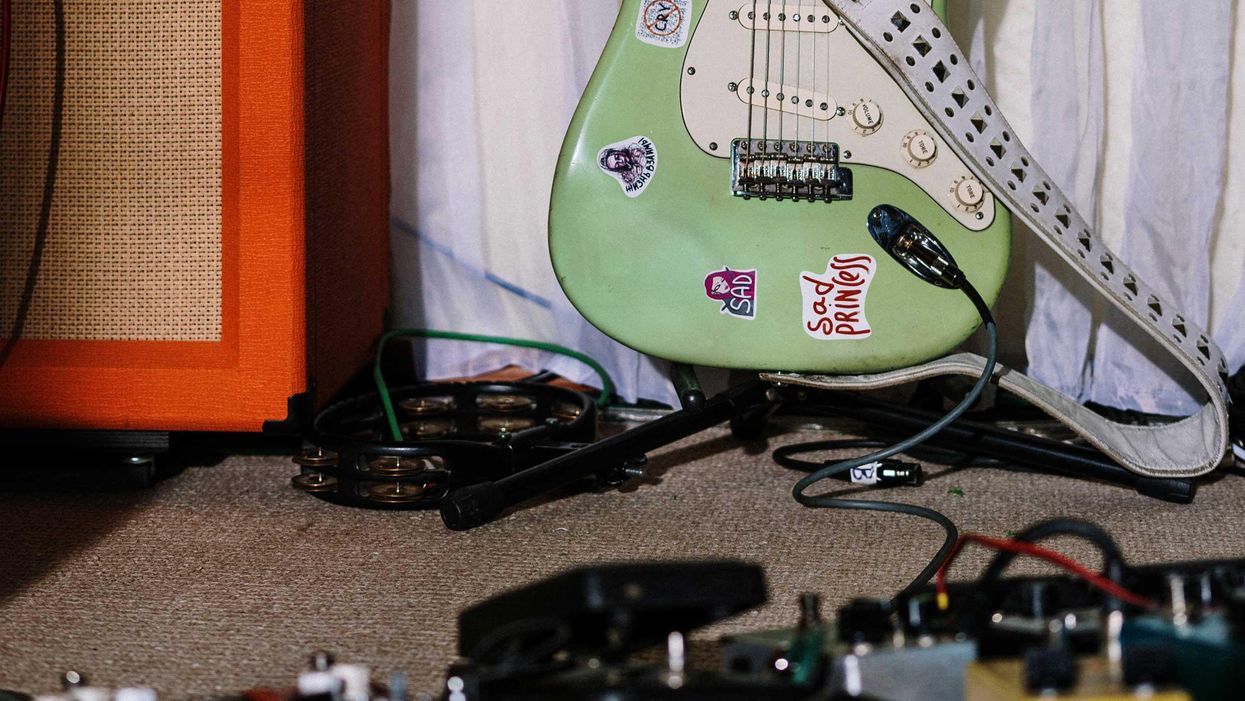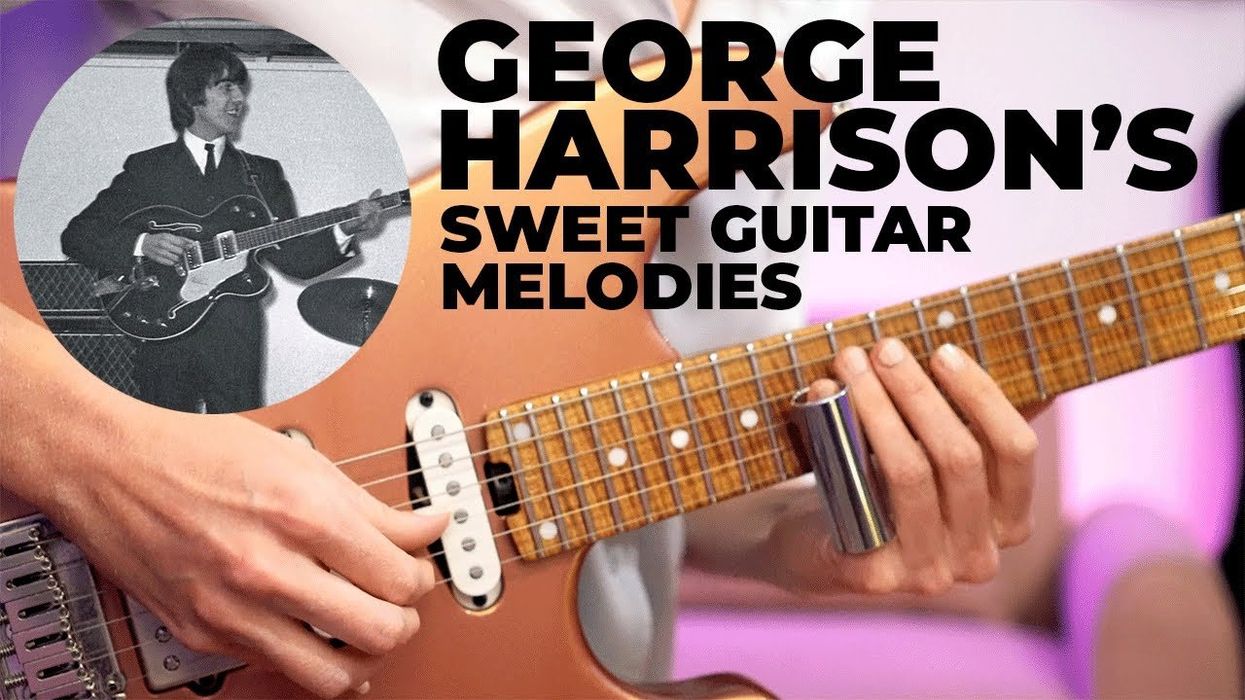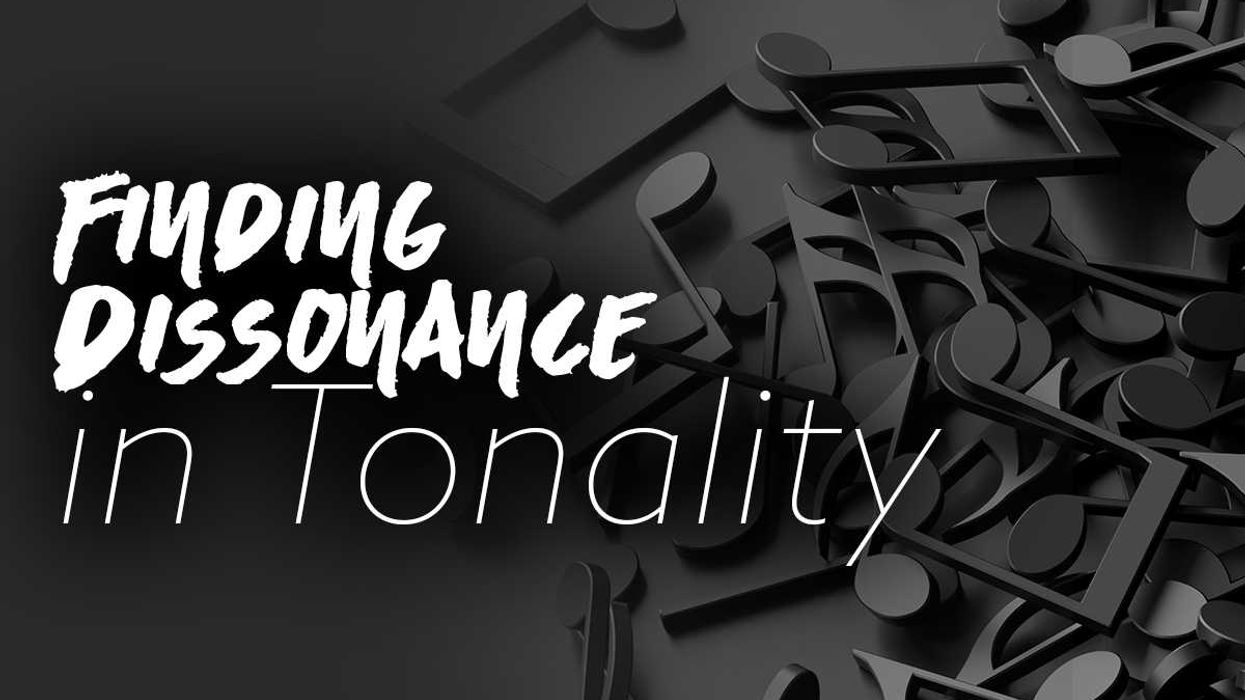Playing a melody or solo with a “drone” means playing over just one note or, in some instances, one chord. Besides playing without any harmonic accompaniment, it is about as simple a concept as one can image, which also means the possibilities are endless. We’ll look at ways to use drones in a variety of contexts, from ancient to contemporary, blues to metal, traditional to experimental.
Drone in Standard Tuning
Being one of the simplest forms of accompaniment, droning is one of the oldest–before harmony there was the drone! Ex. 1 highlights the ancient nature of the drone with a Taqsim, an improvisation that frequently precedes the performance of traditional Middle Eastern compositions. For this example, you need only hit the open, low 6th string every now and then to keep the drone going. The melody uses notes from the E Phrygian Dominant scale (E–F–G#–A–B–C–D).
The blues is full of droning examples. Particularly in the playing of Lightnin’ Hopkins (“Big Mama Jump”), John Lee Hooker (“Bottle Up and Go”), and Big Bill Broonzy (“Hey Hey”). Ex. 2 is based on Lightnin’ Hopkins’ so-called “Dead Thumb Blues” approach. Just keep pounding out that low, open E string.
John Lee Hooker - "Bottle Up & Go"
Ex. 3 pays homage to Jimi Hendrix’s “Third Stone from the Sun.” Starting at 0:43 Jimi plays a lovely Mixolydian melody in octaves, with a bass line emphasizing the low E. In this case, we have a melody inspired by Jimi’s, with the low E string droning throughout, taking the place of the bass.
Ex. 4 also features a classic rock point of reference, in this case, the Rolling Stones’ “Moonlight Mile.” That timeless song, and this example itself, both feature droning open strings with a melody that moves up and down the neck. In the case of “Moonlight” the guitar riff became the basis for Jagger’s vocal melody, imbuing it with a pseudo-Eastern atmosphere.
An unexpected model emerges from the 1980s. Ex. 5 emulates the Police song “Contact,” with a second instrument doing the droning (the bass guitar plays G throughout). While the bass plays steady eighth-notes, guitar one plays four different arpeggio patterns, which imply different chords in every measure. Guitar two plays a simple, if syncopated, melodic line on top of both the drone and the arpeggios. Other Police songs that also feature one-note bass drones are “Reggatta De Blanc” and the highly disturbing “A Kind of Loving.”
Reggatta De Blanc
Drop-D Drones
Drop-D tuning (as well as other alternate tunings), allows players to get some tonal variety into their drones. Ex. 6 was inspired in part by the call-and-response, instrumental section of “Within You, Without You,” the Beatles’ take on Indian drones (Indian music is perhaps the most well-known of the droning genres). This example is unique in that the 6th, 5th, and 4th strings all drone throughout, creating a D power chord. This illustration also imitates sitar performance by playing the melody on only one string, while moving up and down the neck.
Ex. 7 demonstrates one of the most useful aspects of playing with a drone, the ability to change keys. In this case, the drone is maintained by alternating the bass with the thumb, between the 6th and 4th strings, which are both tuned to D, though an octave apart. While the thumb drones the bass, the melody in the first few measures plays notes from the D major scale, specifically the major 7 (C#), root (D), 3 (F#), and 6 (B). After this melody is performed twice, the key changes to the parallel minor, D Natural Minor, wherein all but the root note are replaced with flatted pitches, b7 (C), b3 (F), and Bb (b6). Don’t let that theory overwhelm you. Instead, actively listen and let your ear tell you that you’ve clearly gone from the major (happy or bright) to the minor (sad and dark) mode. It is the simplicity of the one-note drone that allows for the smoothness of this key change.
Uncommon Alternate Tunings
Arguably, the easiest way to get your guitar droning is to perform in alternate tunings. One can hear this approach in everyone from Robbie Basho to Glenn Branca, Sonic Youth to My Bloody Valentine, and many others. The Velvet Underground were among the first to get such milage out of unusual tunings, specifically their “Ostrich Tuning,” which entails tuning all the strings to the same note (although in different octaves).
Ex. 8 is a tribute to Velvet Underground’s droning “Lady Godiva’s Operation.” My example uses the tuning C–C–C–C–C–C. For more on this tuning check out my lesson “Punk-Rock Madness: It’s More than Power Chords.”
Lastly, no droning lesson would be complete without a mention of the drone metal scene. There are several bands to reference here, going back decades. For Ex. 9 I have chosen to allude to Sunn O))) and the piece “It Took the Night to Believe.” This is a radical piece with the low 6th string tuned down to A—that’s ridiculously low! You might consider putting on heavier gauge strings for this style. This example also features tremolo picking, which isn’t too challenging when you’re playing one note, but it can be tricky to maintain tone and consistency when the second melodic note is added in measure 9. Practice this piece slowly and find yourself a nasty distortion/fuzz pedal to round out the sound.
Drone On
As you can hear, there are endless possibilities when it comes to droning. And although the idea may have been around for thousands of years, new approaches are still being developed and deployed (I didn’t even discuss drones in the classical realm, though there are many examples, or Krautrock). I hope this lesson will inspire you to invent some of your own methods.










![Rig Rundown: Russian Circles’ Mike Sullivan [2025]](https://www.premierguitar.com/media-library/youtube.jpg?id=62303631&width=1245&height=700&quality=70&coordinates=0%2C0%2C0%2C0)







